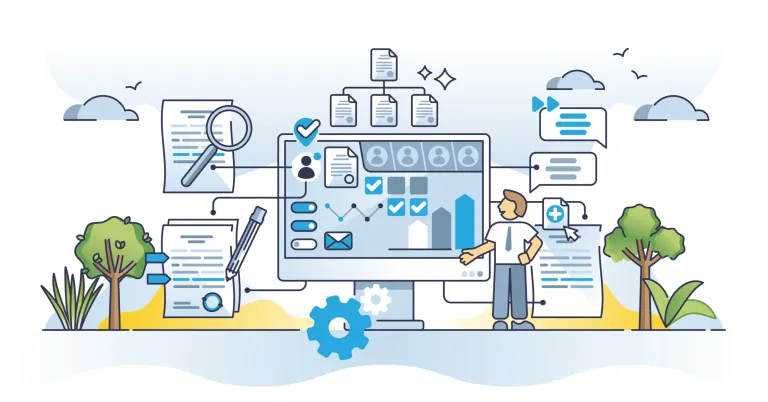Overview
In today’s business world, technology plays a critical role in almost every aspect of operations, from finance and marketing to manufacturing and customer service. However, managing technology and technology vendors can be challenging. Today we discuss the challenges businesses face managing technology and technology vendors and provide an overview of how many are overcoming these challenges by implementing a technology lifecycle plan.

Common Challenges of Managing Technology and Technology Vendors
A significant challenge businesses face in managing technology is staying current with the latest advancements. As technology rapidly evolves it can be challenging to keep up with the latest trends, tools, and best practices. Without a comprehensive understanding of technology, businesses can struggle to leverage it effectively, resulting in missed opportunities for growth and increased efficiency.
Another challenge is managing technology vendors. Many businesses rely on third-party vendors to provide technology solutions, such as software or hardware. However, managing one, let alone multiple vendors can be challenging, especially if they use different systems, processes, and communication channels. Coordinating these vendors can be time-consuming and costly, leading to business and operational interruptions, project delays, and increased expenses.
Lastly, businesses may struggle with managing technology budgets. As technology needs to evolve, it can be a struggle to allocate resources effectively, resulting in overspending or underspending. Overspending can strain budgets, leading to financial issues, while underspending can result in missed opportunities for growth and innovation.
Benefits of a Technology Lifecycle Plan
A technology lifecycle plan provides numerous benefits to businesses. It enables them to stay current with the latest technology trends and advancements, resulting in increased efficiency and competitiveness. It also enables them to manage multiple vendors effectively, reducing project delays and costs. Additionally, it helps businesses manage their budgets effectively, resulting in better financial outcomes. Finally, it ensures that businesses retire outdated technology solutions, reducing the risk of security breaches or other issues.

Components of a Technology Lifecycle Plan
A technology lifecycle plan is a framework that enables businesses to manage technology effectively throughout its lifecycle. It provides a structured approach to planning, implementing, maintaining, and retiring technology solutions. A plan typically includes the following stages:
- Planning: During this stage, businesses identify their technology needs and define their goals and objectives. They also consider their budgets and evaluate potential solutions as well as the resources and competencies required from their IT team.
- Acquisition: In this stage, businesses select and acquire the technology solutions that best meet their needs. They also negotiate contracts and manage vendors.
- Implementation: During this stage, businesses implement the technology solutions and ensure that they integrate seamlessly with their existing systems and processes. They also provide training and support to their employees.
- Maintenance: In this stage, businesses maintain their technology solutions by monitoring performance, conducting regular updates and upgrades, and addressing any issues or bugs.
- Retirement: During this stage, businesses retire outdated technology solutions and replace them with new ones. They also ensure that they dispose of old equipment in an environmentally responsible way.
About iLLÜM Advisors
We are passionate about helping our clients overcome IT challenges without simply throwing money at solutions without a measurement for success. We accomplish this by enabling their existing IT teams to deliver transformative solutions with velocity and improve cyber risk postures by becoming project-based.
Our team of senior IT leaders and project managers support our clients with an industry-leading IT management methodology and cyber risk management platform to help organizations of all sizes tackle their most pressing IT challenges. All our service options are provided on a month-to-month basis without long-term commitments.
Click here for more – insights


